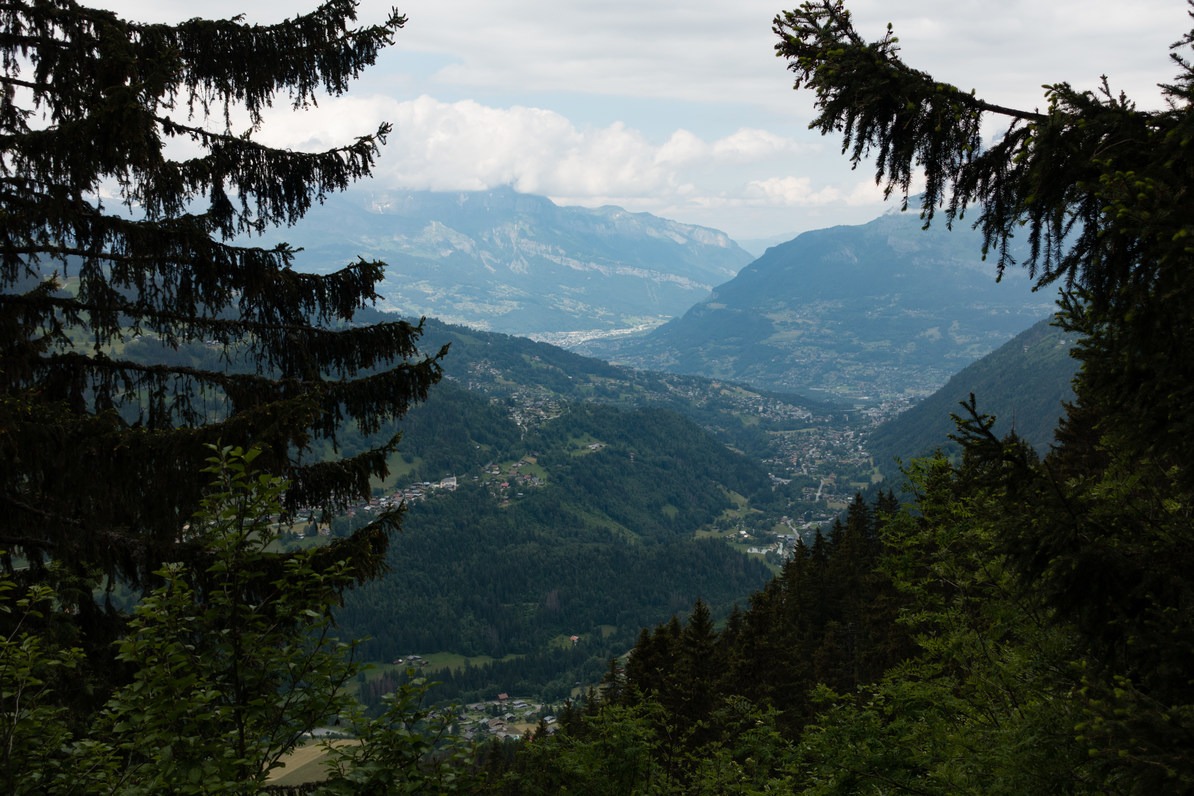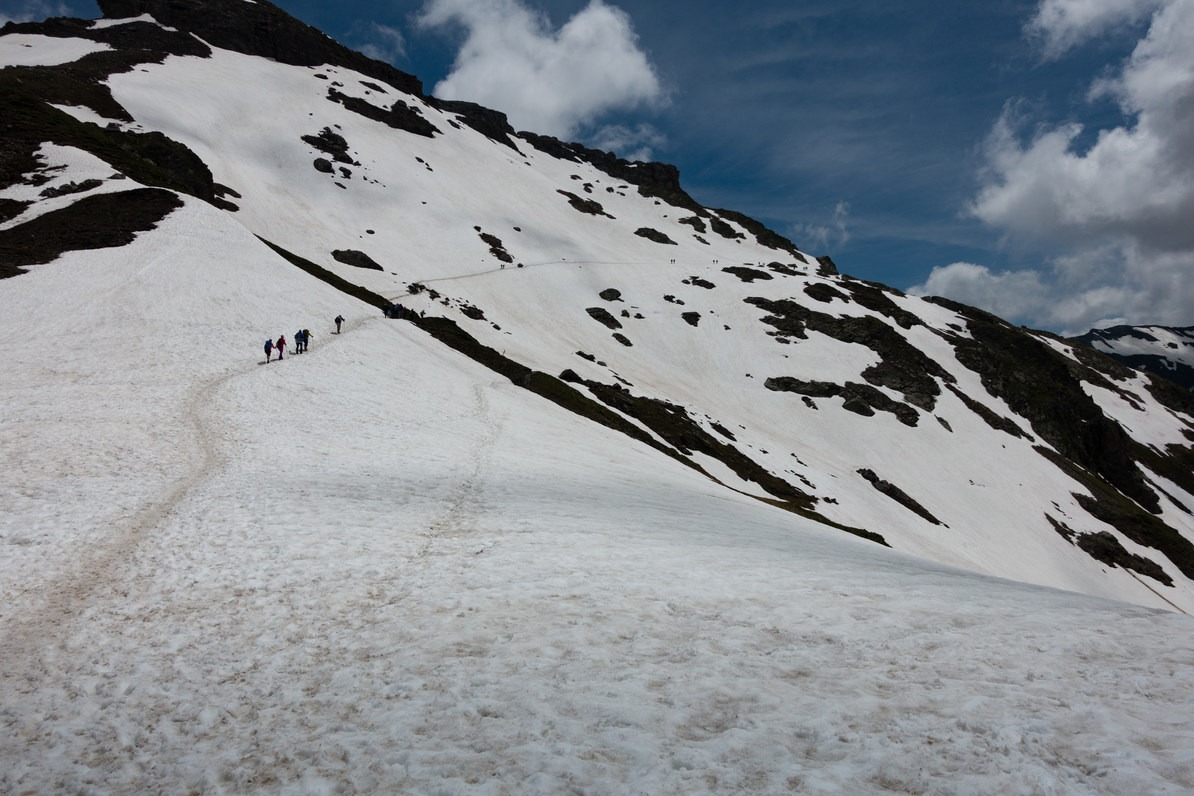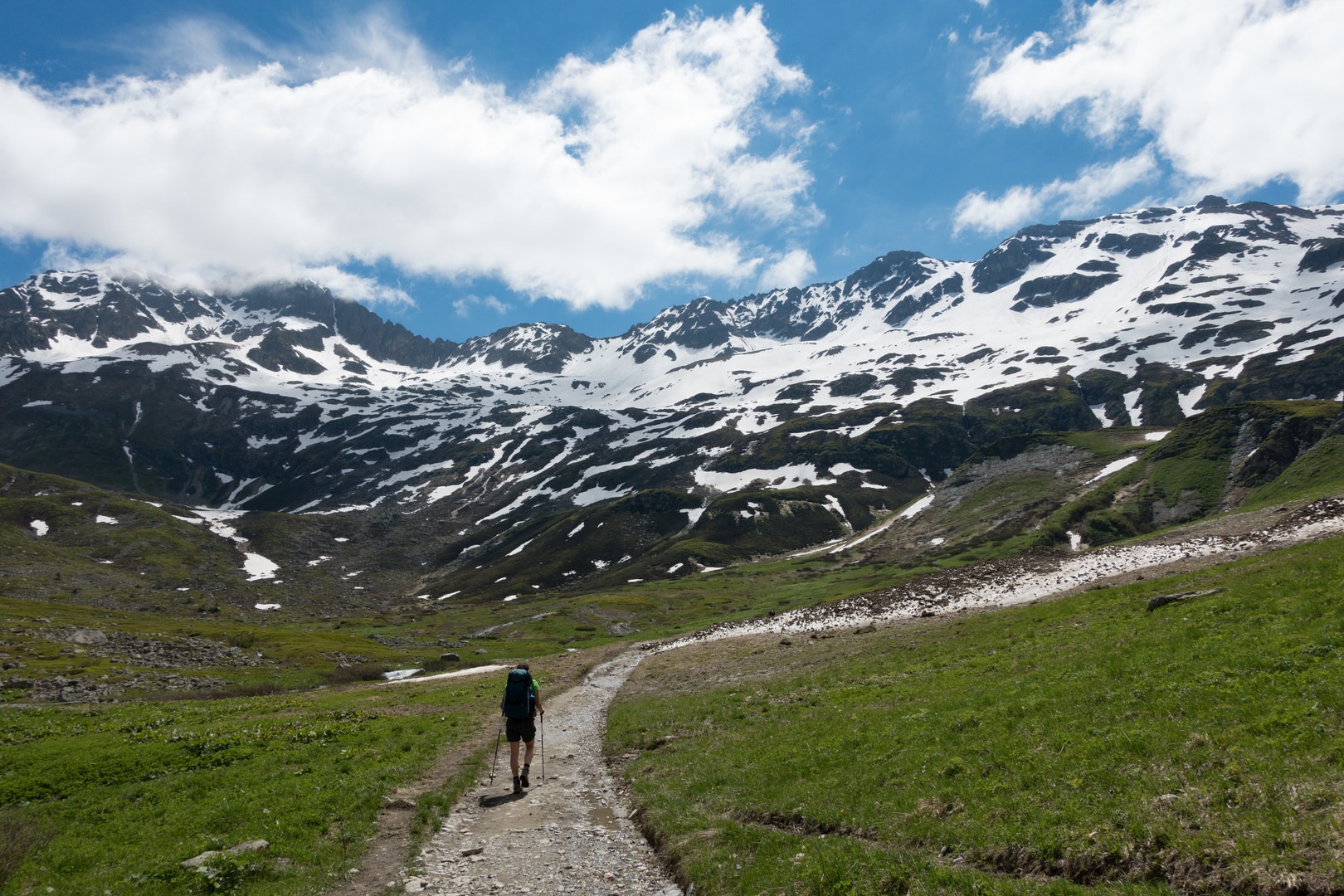You are here
If you are lucky enough on your arrival to Chamonix, you will be able to see the spectacular Mont Blanc massif dripping with glaciers to entice and excite you for the wondrous adventure that awaits you. Starting in Les Houches is Stage 1 of the TMB that goes over Col de Voza and finishes in Les Contamines, which offers a host of good housing options for the night. Several refuges and mountain hotels also dot the trek to allow early stopping or rest stops with shops that offer coffee or sandwiches. Les Houches itself is a quaint ski resort town that serves as the training grounds for the French National Ski Team and the Ski Club of Great Britain.
There are a plethora of options in Les Contamines with excellent food and privacy options to fit every budget and taste. Continuing onward past Les Contamines toward Refuge Nant Borrant or Refuge de la Balme can be helpful to cut down the distance from the next day, especially if you are planning to take the high variant.
The lodging for the end of Stage 2 is a little different; there are several options depending on the route you want to take and the distances you want to cover. Refuge du Bonhomme would be your destination if you want to take the high route but do not have the time to finish all the way to Refuge Mottets. Les Chapieux would be your destination if you are either taking the low route due to bad conditions or if you are exiting the trail via bus from Les Chapieux. Refuge Mottets would be your destination if the conditions are good and you are prepared for the strenuousness of the day; going all the way from Les Contamines to Refuge Mottets over Col du Fours in one day is possible but very strenuous with a lot of distance to cover.
There are two variants for Stage 1, both of which share Col de Voza as the first main point of interest. A cable car from downtown Les Houches can cut out a 2-hour hike through the forest without missing any views to keep your legs fresh for the scenic high variant and tough days ahead. The two variants for Stage 2 both go over Col du Bonhomme and Col de la Croix, but the high variant and path to Mottets for the night continues up over Col des Fours, which is tied with Fenetre d’Arpette for the highest elevation point on the official TMB. Only go over Col des Fours in good weather, with proper experience, and with proper gear because snow can hang late in the season. Talking to the manager of your lodging the night before should give you all the information you need regarding the snow conditions. The description below will follow the high variants for both stages.
Resupply
- Les Houches (multiple options)
- Les Contamines (multiple options)
Lodging / Cafes
- Les Houches (multiple options)
- Col de Voza (hotel)
- Refuge de Miage (refuge)
- Les Contamines (multiple options)
- Nant-Borrant (chalet)
- La Balme (chalet)
- Les Chapieux (refuge)
- Les Mottets (refuge)
Stage 1

Views along the forested section towards Les Contamines.
Start the first day by making your way to Col de Voza, either by hiking two hours from Les Houches or by taking the cable car. After leaving the station, follow the signs to Col du Tricot along the forested balcony trail. The trail will climb gradually as you come to a clearing with some boulders and a stream crossing over a high swing-bridge. Continue into the forest on the other side and the slow gradual climb to Col du Tricot will begin, eventually getting above treeline. Wonderful views await at the top, including an incredibly steep knee-pounding descent to Refuge de Miage, which makes an excellent place to stop for some food. Keep an eye out for fields of apiaceae here in the valley.
From Refuge de Miage, tremendous views up the valley of Dômes de Miage reward you for the steep descent and the next climb to Le Truc to come. When you are ready, continue onward to Le Truc for the last climb of Stage 1. If time and weather permit, a side trip to the summit of Le Truc is well worth it for great views all around from the grassy clear viewpoint. The descent from here to Les Contamines is mostly forested with only sparse views across the valley below. Les Contamines makes a fine choice to stop for the night, especially if your next evening is at Refuge du Bonhomme or Les Chapieux. If you'll be staying at Les Mottets the following night, it may be worthwhile to press onward to Refuge Nant Borrant if time allows. Les Contamines is also a good place to get any food or gear needed before continuing, because the next restocking point will be two or three days away in Courmayeur.
Stage 2

Onward to Col du Croix du Bonhomme.
Stage 2 begins once you leave Les Contamines. The path mostly follows the road and is forested for the first hour or so until you arrive at Notre-Dame de la Gorge. The ancient chapel was rebuilt in 1699 by Jean de la Vougniaz, a master builder from Valsesia who had recently completed the construction of the church in Saint-Gervais. The origin of the Catholic chapel is obscure, but it dates back at least as far as 1443. From here the trail begins climbing steeply along the gorge cut by Le Bon Nant with views starting to open up of the surrounding mountains. A clearing with Dactylorhiza fuchsii flowers lining the meadow in early summer will mark the leveling off of the trail as the climb becomes more gradual. Look for Refuge Nant Borrant for a good place to stop for coffee and reapply sunscreen because the rest of the day is above treeline with very sparse protection from the sun.
Once you pass Refuge de la Balme, the climb steepens again and meanders through the steep valleys cut by glaciers. After rounding the ridge coming from the northeast face of Aiguilles de la Pennaz, Col du Bonhomme will reveal itself. This col can hold snow through early July, but it isn’t too steep. A small hut marks the top of the col, and a rest here is well deserved before continuing to Col de la Croix du Bonhomme, which hugs the contour of the ridge and offers great views to the southwest. Col de la Croix du Bonhomme is another 30 to 45 minutes of climbing, though it is not as steep as before. A large monument marks the top and is the point where you must decide to take the high or low variant for Stage 2.
Those taking the low variant or staying at Refuge du Bonhomme to tackle the high variant the next day should follow signs to Les Chapieux; those staying at Les Mottets should follow signs for the trail to Col des Fours, which continues climbing under the powerlines to the north. With a late snow this can turn into a very long slog, and it should only be attempted with sufficient energy because Les Mottets is another 3 hours from the junction at Croix du Bonhomme.
From the top of the Col des Fours, a 40-minute side trip to Tete Nord des Fours can be taken with an excellent 360-degree panorama. The views from the Col are incredible on their own with a sweeping view of Aiguille des Glaciers and the Col de la Seigne, which will be tackled the following day as you enter Italy. With good snow, a glissade down to the bottom of the east side of Col des Fours can save a lot of time; otherwise, expect a descent through shale to a platform that overlooks the rest of the valley. Careful navigation and maneuvering around the streams and snowfields is necessary to avoid getting lost or falling in the water because the trail here is steep and not very well maintained. Eventually you will join a boot path toward the basin of Plan des Fours, which offers superb fields of wildflowers in June and July including Pulsatilla alpina. The boot path becomes a pasture road and winds down the hillside through deserted buildings of Les Tufs. The road widens from here and makes its way down to Les Villes de Glaciers, where there are public toilets in the small car park. Continue along the road to cross the bridge and then turn left on the final road walk to Les Mottets, which marks the end of Stage 2. Make sure to leave time to join the community-style dinner, which should not be missed.
For additional coverage of the Tour du Mont Blanc, check out the following articles:
Logistics + Planning
Current Weather: Powered by Dark Sky






























Comments
Sign In and share them.